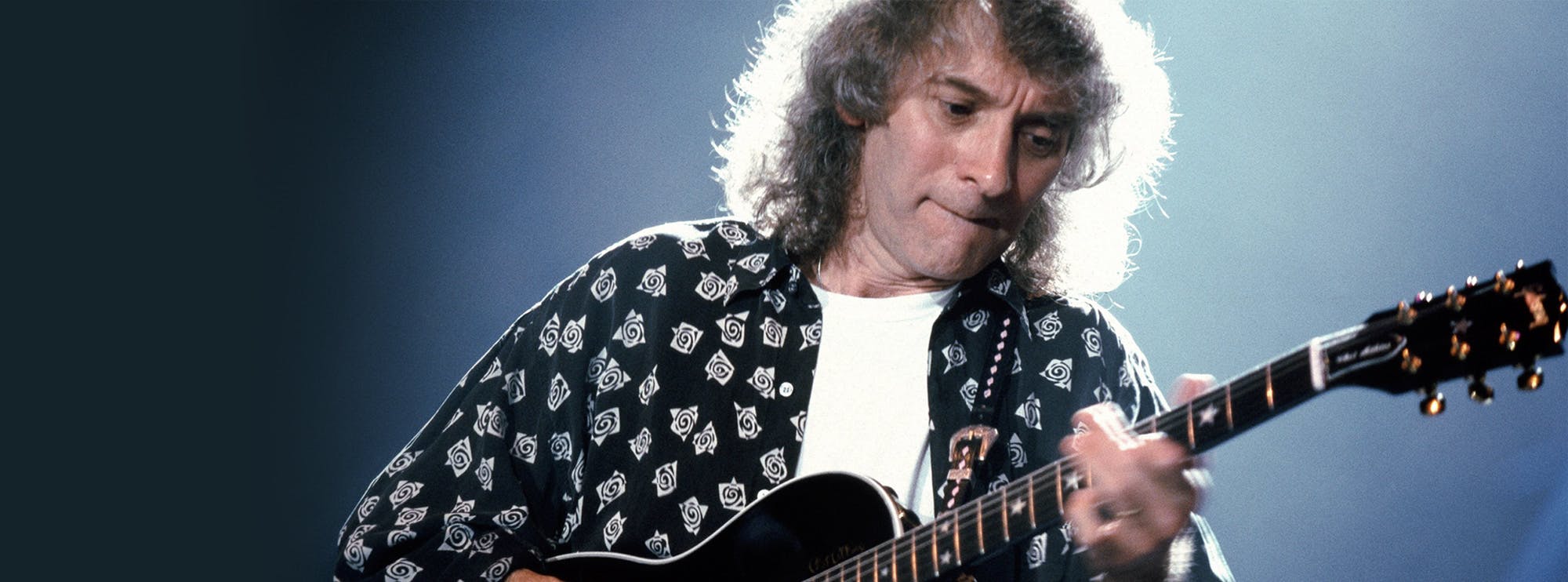Iron Maiden's "The Number Of The Beast" album: A guitarist's perspective
Guitar lessons by Danny Gill
Iron Maiden's 1982 album "The Number of the Beast" is a landmark in heavy metal history, featuring the debut of vocalist Bruce Dickinson and showcasing the band's signature guitar-driven sound. Becoming their first release to reach the No.1 spot on the UK Album Chart, and to break the Top 40 Billboard 200 in the US, the album also produced the classic track’s “Run To The Hills” and “The Number of the Beast,” as well as some of the band’s most memorable riffs and scorching solos. This album is a treasure trove for guitarists, thanks to the dual-guitar attack of Dave Murray and Adrian Smith, both of whom contribute unique styles, tones, and techniques.
In this guitar lesson course, LickLibrary veteran, Danny Gill walks you through the guitar tour-de-force that is Iron Maiden’s The Number of the Beast album. You’ll be learning the best licks and riffs from guitar duo Dave Murray and Adrian Smith including “Run to the Hills” and “The Number of the Beast”. In this article will delve into each song on the album, providing an in-depth analysis of the guitar work, scales, and solos, as well as a spotlight on lead guitarist Dave Murray.
*NB: The track 'Hallowed Be Thy Name' is not included in this lesson guitar lesson course due to licensing restrictions.
1. Invaders
The album kicks off with "Invaders," a fast-paced, energetic track. The guitar work is characterised by galloping rhythms and open-string riffs in E minor. The verse features power chords and palm-muted chugs, while the chorus introduces some melodic chord progressions. The solo is a prime example of Murray's fluid legato playing, utilising the E natural minor scale with occasional chromaticism for tension.
2. Children of the Damned
"Children of the Damned" is a more melodic track with a haunting, arpeggiated chord progression in G# minor. The chorus features an uplifting shift to E major, which contrasts with the darker verse. The solo, played by Smith, is built on the G# Aeolian mode and features a mix of alternate picking, slides, and string bending. The outro solo, performed by Murray, employs the E Phrygian Dominant scale, giving it an exotic flavour.
3. The Prisoner
"The Prisoner" is a mid-tempo song with a strong, syncopated rhythm in A minor. The guitar work features barre chords and power chords, with a catchy, octave-based main riff. The chorus introduces a more melodic element with harmonised guitar lines. The solo is a showcase of Murray's signature legato style, using the A Dorian mode with some bluesy bends and trills.
4. 22 Acacia Avenue
This track is a continuation of the "Charlotte the Harlot" saga and features an aggressive, riff-heavy approach in E minor. The verse uses palm-muted power chords and open-string riffs, while the pre-chorus introduces chord progressions with a slight chromatic touch. The solo section contains a variety of techniques, including alternate picking, legato, slides, and string bending. The outro solo, performed by Smith, employs the E harmonic minor scale with some tasteful, bluesy bends.
5. The Number of the Beast
The title track is an iconic metal anthem, built on a menacing, chromatic riff in C# minor. The guitar work is characterised by galloping rhythms, power chords, and palm-muted chugs, with a memorable pre-chorus that uses syncopated rhythms and a dual-guitar harmony. The solo, played by Murray, is a masterclass in legato phrasing, using the C# natural minor scale and incorporating techniques like slides and string bending.
6. Run to the Hills
"Run to the Hills" is another classic Iron Maiden track, featuring a galloping rhythm and a catchy, major-key melody in E major. The guitar work consists of power chords, open-string riffs, and harmonised lead lines. The solo, performed by Smith, employs the E Mixolydian mode, using techniques like alternate picking, string bending, and slides to create a melodic and memorable solo.
7. Gangland
"Gangland" is a fast, aggressive song with a driving rhythm in A minor. The verse features power chords and palm -muted chugs, while the chorus introduces more melodic chord progressions. The bridge section showcases a dual-guitar harmony, which adds to the intensity of the song. The solo, played by Murray, uses the A Phrygian Dominant scale, giving it a darker, more exotic flavour. Techniques employed in the solo include alternate picking, legato, and string bending.
Dave Murray’s Contributions to The Number of the Beast
Dave Murray is an integral part of Iron Maiden's sound, and his contributions to "Number of the Beast" are nothing short of phenomenal. His fluid, legato-based playing style adds a unique touch to the band's sound, while his ability to craft memorable solos and harmonies is unmatched. His mastery of various scales and modes, combined with his tasteful use of techniques like string bending and vibrato, make him a guitarist worth studying for players of all skill levels.
Adrian Smith’s Contributions to The Number of the Beast
Adrian Smith's contributions to "Number of the Beast" cannot be understated, as his guitar work adds a distinct flavour to the album. As the band's second guitarist, Smith complements Dave Murray's fluid legato style with his own melodic and rhythmic sensibilities. His solos on tracks like "Children of the Damned" and "Run to the Hills" are memorable and demonstrate his mastery of various techniques, such as alternate picking, string bending, and slides. By harmonising with Murray and crafting catchy riffs, Smith helped to solidify Iron Maiden's dual-guitar attack and shape the sound of the legendary "Number of the Beast" album.
In conclusion, Iron Maiden's "Number of the Beast" is a quintessential album for guitarists to study and appreciate. The combination of Dave Murray and Adrian Smith's distinct guitar styles and techniques helped to shape the iconic sound of Iron Maiden. From the powerful riffs to the captivating solos, this album is a treasure trove of inspiration for guitar players of all levels. By dissecting and understanding the techniques used in this album, guitarists can learn valuable lessons about crafting memorable melodies, harmonies, and solos that will stand the test of time.
Guitar Techniques Used in "The Number of the Beast"
"The Number of the Beast" album showcases a diverse range of guitar techniques, making it an essential study for aspiring guitarists. The dual-guitar harmonies, a trademark of Iron Maiden's sound, are prevalent throughout the album, creating rich, melodic layers. Galloping rhythms and syncopated power chords drive the songs forward, while open-string riffs and palm-muted chugs add heaviness. The solos feature fluid legato, alternate picking, string bending, and slides, highlighting the skills of both Dave Murray and Adrian Smith. Moreover, techniques like arpeggiated chord progressions, chromaticism, and bluesy bends contribute to the album's enduring appeal and iconic status.
- Vibrato
- Alternate Picking
- Legato
- Double Stop Bends
- Unison Bends
- Trills
- Tremolo Picking
- Chord Progressions
- Arpeggios
- Harmonics
- Pull-offs
- Power Chords
- Palm Muting
- Barre Chords
- Hammer-ons
- Double Stops
- Slides
- Sustain
- String Bending
- Syncopated Rhythms
- Open-String Riffs
- Whammy Bar Tricks
- Bluesy Bends
- Octave Melodies
- Galloping Rhythms
- Dual Guitar Harmonies
- Arpeggiated Chord Progressions
- Chromaticism

About The Tutor
Tutor Profile
Danny Gill
Danny Gill is, without a doubt, the most loved tutor by our community. With an incredible array of DVDs and web lessons for LickLibrary covering a wide variety of topics all of which he covers with incredible detail, it's no wonder he carries as much respect as he does. As...



